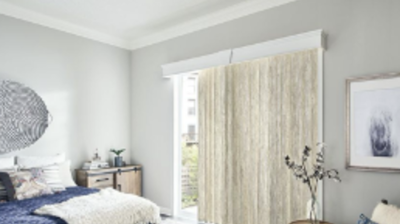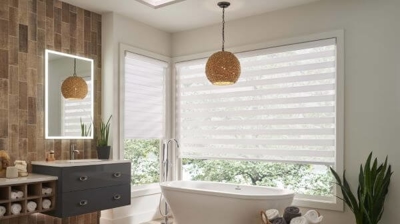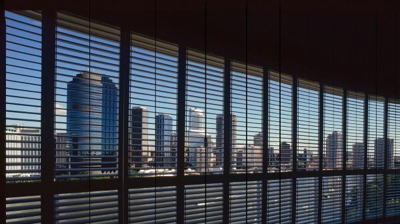The landscape of our world has changed drastically over the past few weeks with the world wide spread of COVID-19. We hope that everyone is staying safe and healthy at home.
If you are looking for some things to do while at home, now is a great time to get started on some spring cleaning.
With these days getting warmer and sunnier you may start to notice the dust that has settled throughout the winter months.
Window treatments are notorious for secretly collecting dust and dirt over the months. You may not even notice how dirty your window treatments are until you throw them open.
Never fear because we are here to help! In this article, we will discuss the best way to care for and clean your beautiful window treatments!
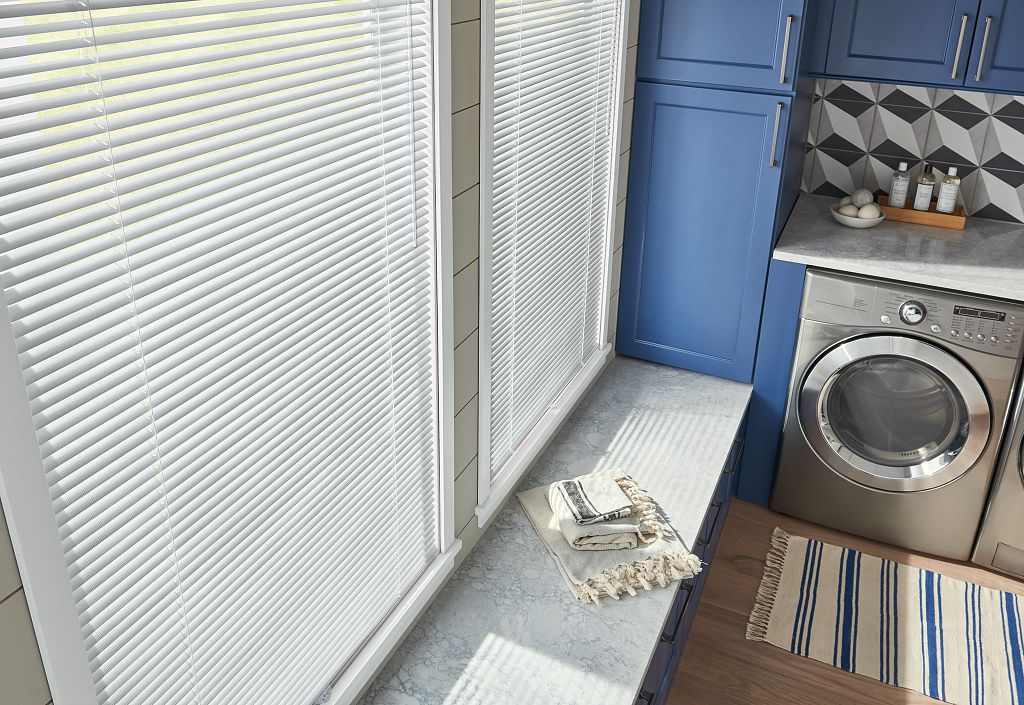
Blinds
Cleaning your blinds may feel a little overwhelming. There are so many slats that can all collect dust over time. The orientation of the slats as well as the material of the blinds will determine the method of cleaning as well as how often they will require cleaning. Here are some of the most popular cleaning tips for our most commonly seen blinds.
ALUMINUM BLINDS
Aluminum blinds are going to be easier to clean because of the material, but maybe more time consuming depending on the structure. The metal slats are easy to clean because you can use almost any cleaning agent, including just plain old water to wipe them down.
The size of the slat will determine the number of slats and the distance between each one. Window blinds with smaller slat sizes will have more of them closer together which can make cleaning more time consuming.
For a quick clean, use a duster or a vacuum cleaner with a hose attachment. For a deeper clean, take a damp cloth with your choice of cleaner or just water and wipe down each slat.
Side note: because these blinds are metal, be mindful of the amount of water that is in contact with the slats for a prolonged period since too much exposure to water could cause rust to develop over time.
VINYL BLINDS
Vinyl blinds are made of an incredibly durable material. These blinds are extremely popular because they are low maintenance, resistant to heat and humidity, and available in a wide variety of styles, colors, and textures.
Vinyl is also very easy to clean since it does not react to water the same way metal does, or cleaning agents the same way wood will.
Just as with aluminum blinds, the size of the slats will determine the number of slats and how close together they are in the treatment. This in turn will determine the lengthiness of the cleaning process.
For light cleaning, use a cloth, duster, or a vacuum cleaner attachment to remove any dust or debris that may have settled on the slats. For a deeper clean, wipe down each slat with a damp cloth. Water or your favorite cleaning agent will work on these versatile surfaces.
FABRIC COVERED BLINDS
Fabric covered blinds are beautiful window treatment options. To clean fabric covered blinds, the trick is finding a cleaning agent that will not stain or damage the material.
For light cleaning, simply dust or use a vacuum attachment on the lightest setting to remove dust or debris. For a deeper clean, spot clean with a cleaner that is safe for the material. You can always contact the manufacturer for more information on cleaning agents that will not harm the fabric.
WOOD AND FAUX WOOD BLINDS
Wood blinds are beautiful window treatments for almost any room, but wood is a more delicate material that will react to water and moisture.
To clean wood blinds, use a duster or a vacuum cleaner for a light clean. For a more thorough cleaning, use wood polish or lemon oil.
Faux wood blinds deliver the same aesthetics of wood blinds, but are much more durable. The material will not warp or be damaged by water which makes these window treatments perfect for rooms with more moisture or higher humidity.
Dusting will take care of light cleaning, but for a more extensive cleaning faux wood blinds can also be cleaned with a lightly dampened cloth or with a non-abrasive cleaner.
HORIZONTAL BLINDS
We have talked about the material, so now let's discuss the orientation of the blinds. When you hear of “window blinds,” most often you think of mini blinds.
Mini blinds are more challenging to clean because of the number of slats and how close they are together. But not all horizontal blinds are mini blinds.
There are other styles of horizontal blinds that have larger slats allowing for more space in between each slat and reducing the number of slats in the total treatment.
For light cleaning, dusting the slats will be the most important. Horizontal slats will tend to collect more dust because of their orientation. Dust with a cloth, a duster, or use a vacuum with an attachment.
For deeper cleaning, it will depend on the material of the slats. For metal or vinyl slats, your choice of non-abrasive cleaner will do the trick.
For wood blinds, steer clear of water that can cause damage and opt for wood polish or lemon oil.
VERTICAL BLINDS
Vertical blinds do not collect as much dust because of the way they hang. Opening and closing vertical blinds will dislodge everyday dust that tries to settle on the slats eliminating the need to clean as frequently.
For light cleaning, wipe down the slats with a damp cloth or use a vacuum cleaner with an attachment. For a more thorough cleaning, use a light, household cleaner or soap and water to clean each slat.
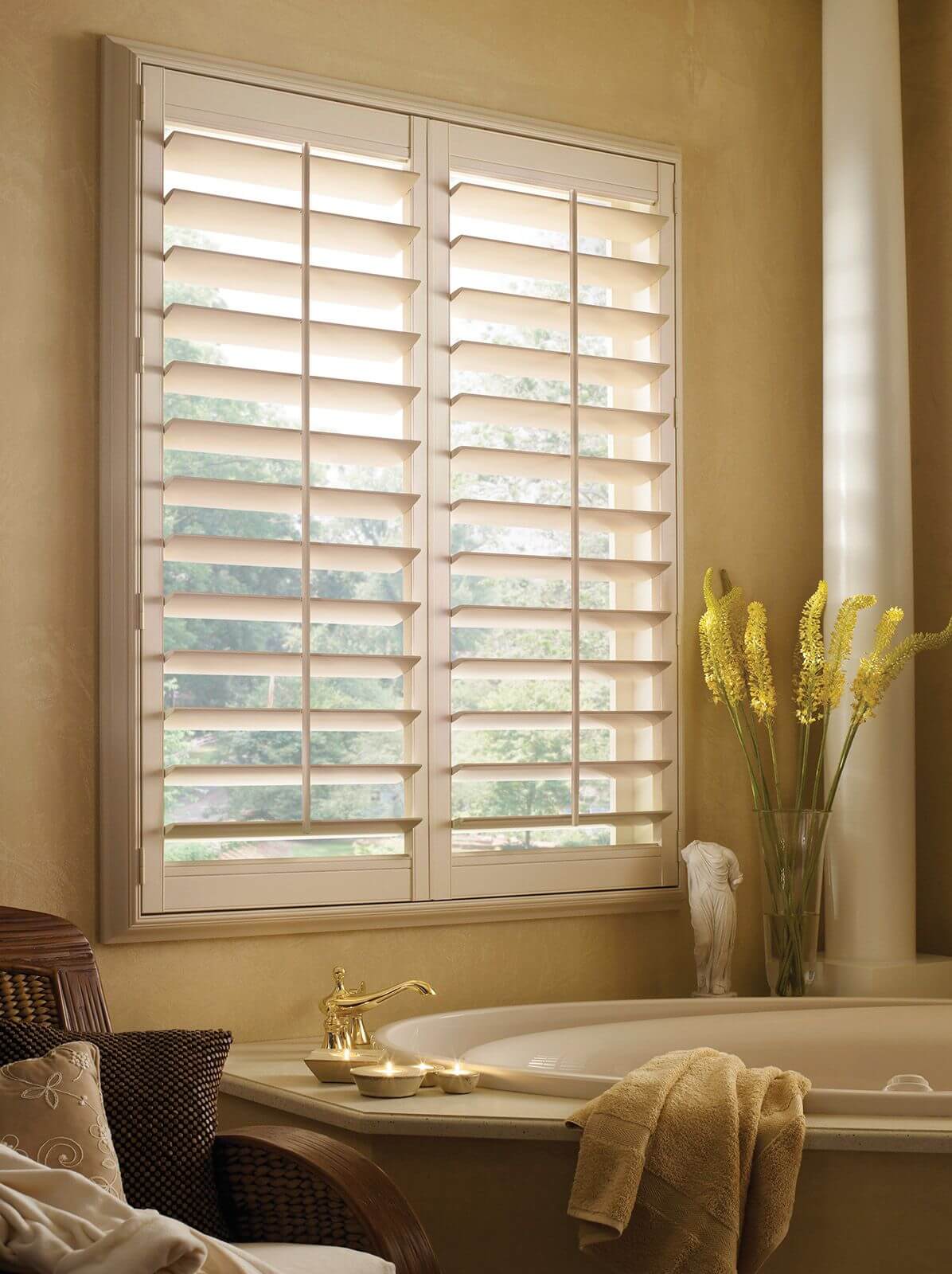
Shutters
Shutters will have similar considerations to blinds when it comes to cleaning. The material of the shutters as well as the size of the louvers will determine how best to clean shutters.
There will not be as many variations of styles since most shutters have the same basic form. The difference in cleaning methods will come with the material of the shutter. Here are some of the most common materials used for shutters and how best to clean them.
WOOD SHUTTERS
One of the most popular forms of shutters is natural wood. As is the case with any natural wood product, you will want to avoid water or harsh cleaners on these beautiful window treatments which can damage the wood.
For light cleaning, simply use a dry cloth, a duster, or a vacuum cleaner with an attachment to remove dust from the louvers and around the shutters.
For a more extensive clean, once the dust has been removed, wipe down the entire surface with a wood polish or lemon oil.
Many manufacturers will have suggestions of what cleaning products are suitable for their shutters. With natural wood, it is even more important to follow their recommended guidelines.
WOOD COMPOSITE SHUTTERS
Wood composite shutters are gorgeous window treatments that have the look and feel of natural wood, but are easier to clean due to the durability and resistance of the material.
These shutters are made from a unique wood composite core and covered with an acrylic coating. They are incredibly popular since they offer the stylistic look of wood without the maintenance or price tag of natural wood shutters.
When it comes to cleaning wood composite shutters, they tend to not attract as much dust as natural wood products, giving you more time in between cleanings.
For light cleaning, use a duster to remove any dust or debris. For a more thorough cleaning, a damp cloth or your choice of cleaners can be used to wipe down the louvers.
It is important to note that while these shutters are more durable than natural wood shutters, they may not be completely waterproof.
VINYL SHUTTERS
Vinyl shutters are the most durable option of window shutters available since they are made entirely of synthetic materials making them damage resistant and waterproof.
They are also completely customizable which gives them amazing versatility to be used in any area to match almost any style.
Vinyl shutters are also low maintenance since the material tends to detract everyday dust and the durability of the material allows for almost any cleaning agent to be used when needed.
For light cleaning, simply dust or use a vacuum cleaner with an attachment. For deeper cleaning, use a cleaner or even water to dampen a cloth and wipe down the entire treatment.
Shades
By now it’s becoming plain to see that the material of the window treatment plays a key role in determining what cleaning techniques are best to be used. Shades are no different!
Shades come in a wide variety of styles and each one is going to have a different set of material options. Here are some of the most common types of shades and how best to clean them.
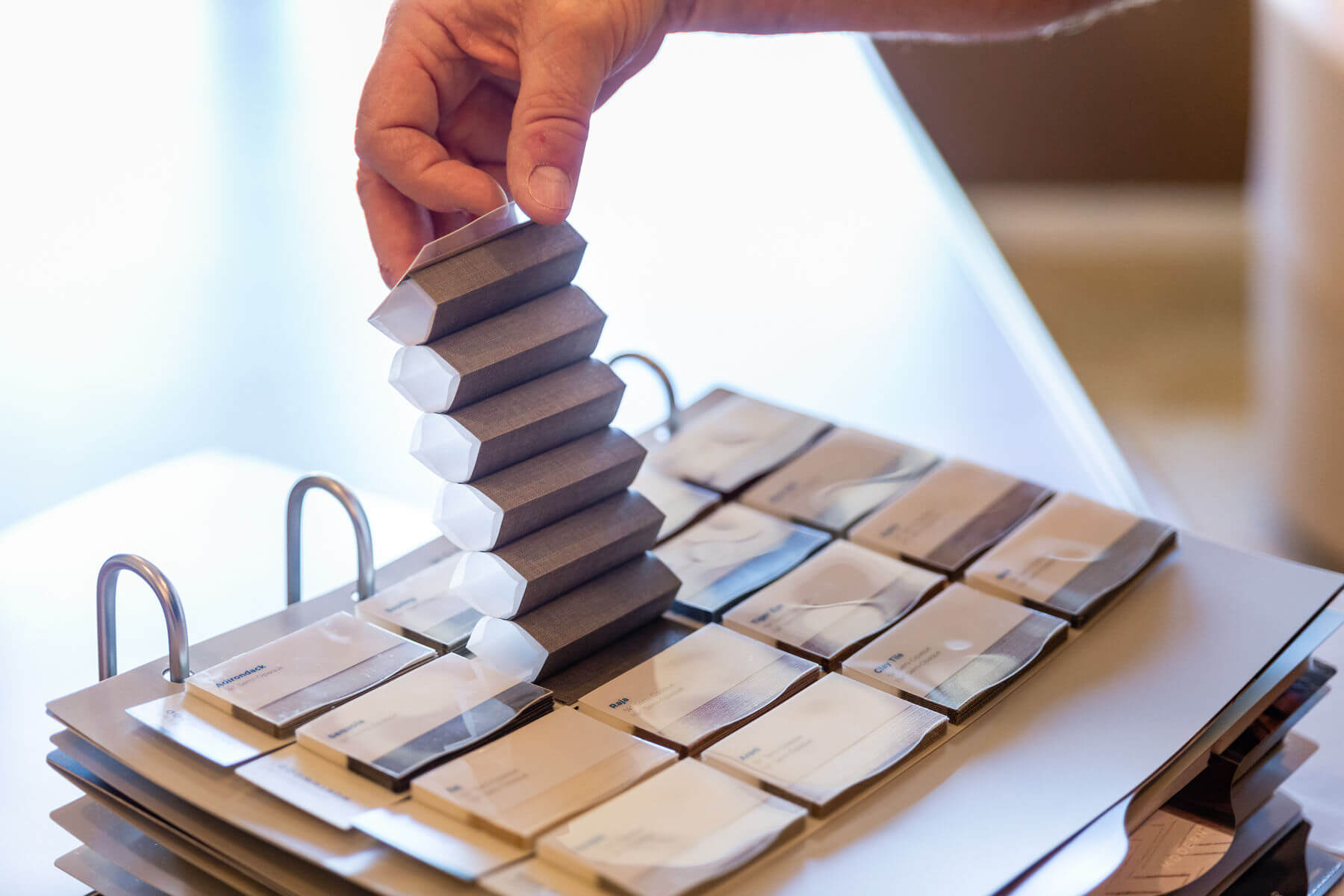
CELLULAR/HONEYCOMB SHADES
Cellular shades are also called honeycomb shades because the cells in between the sheets of material create a honeycomb pattern.
These shades are some of the easiest to clean because of the anti-static and dust repellent material that they are made from.
When it is time to clean cellular shades, simply lower the shade and use a vacuum cleaner with a brush attachment. The brush attachment will help to dislodge any extra dust or debris as well as ensure that the suction does not damage the shade.
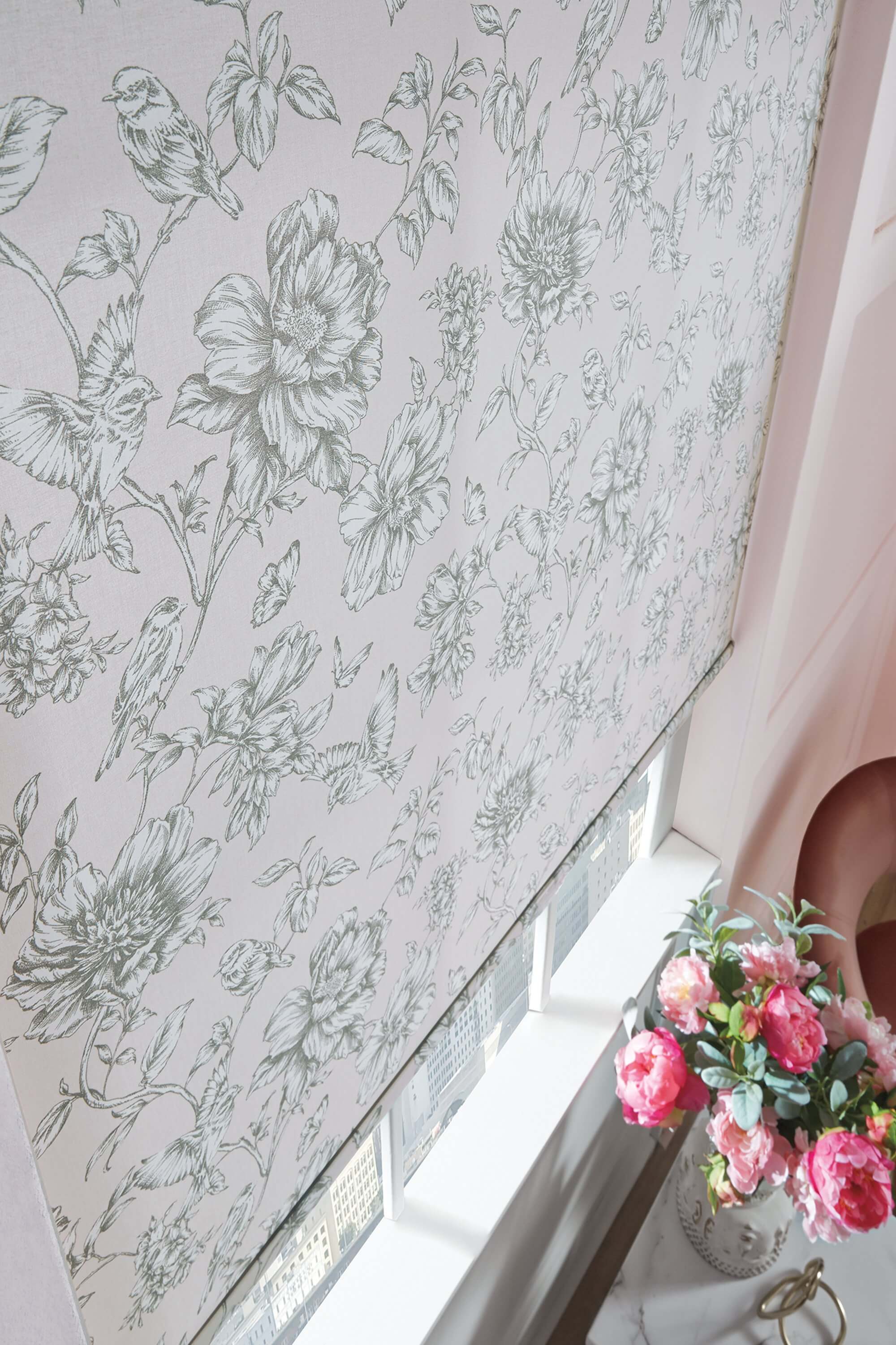
ROLLER SHADES
Roller shades typically have a smooth surface, so they are much easier to clean than blinds or shutters.
Roller shades can be made from a variety of materials, including fabric, solar, and vinyl. The type of material will determine the type of cleaner that can be used.
Roller shades are either rolled up or hanging straight down. In either position, they are not prone to collecting dust or getting too dirty.
The best way to clean is with a vacuum cleaner brush attachment or simply wipe down with a cleaning cloth. A cleaning solution can be used as well depending on the material of the shade.
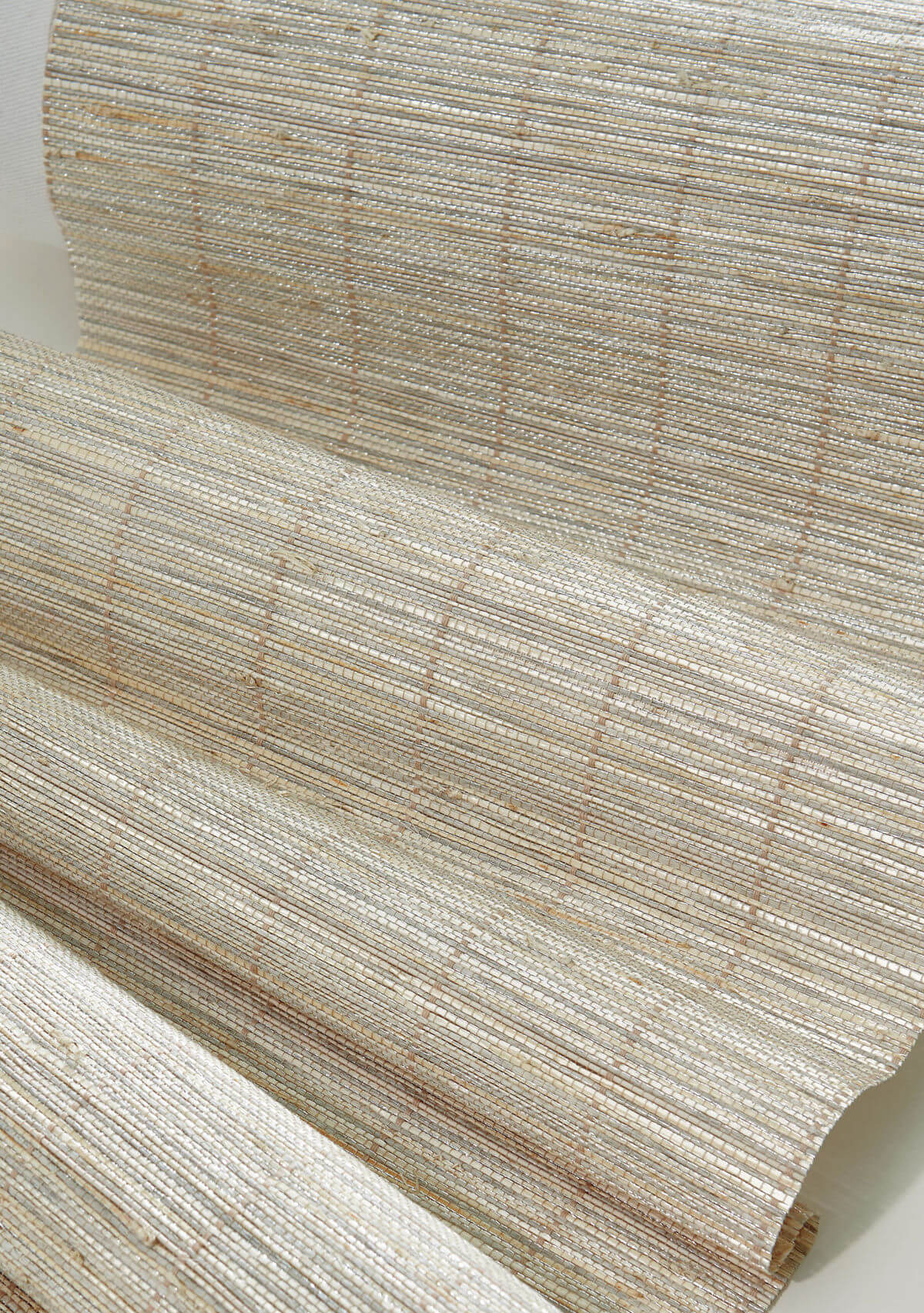
WOVEN WOOD SHADES
Woven wood shades are especially trendy this year. Woven wood shades can be made from all sorts of natural fibers such as bamboo, reeds, jute, and grasses.
Due to the organic materials used in the shades, it may be important to limit the amount of water or cleaner that comes in contact with the treatment.
The best option is to dust or use a vacuum cleaner attachment on these beautiful window shades.
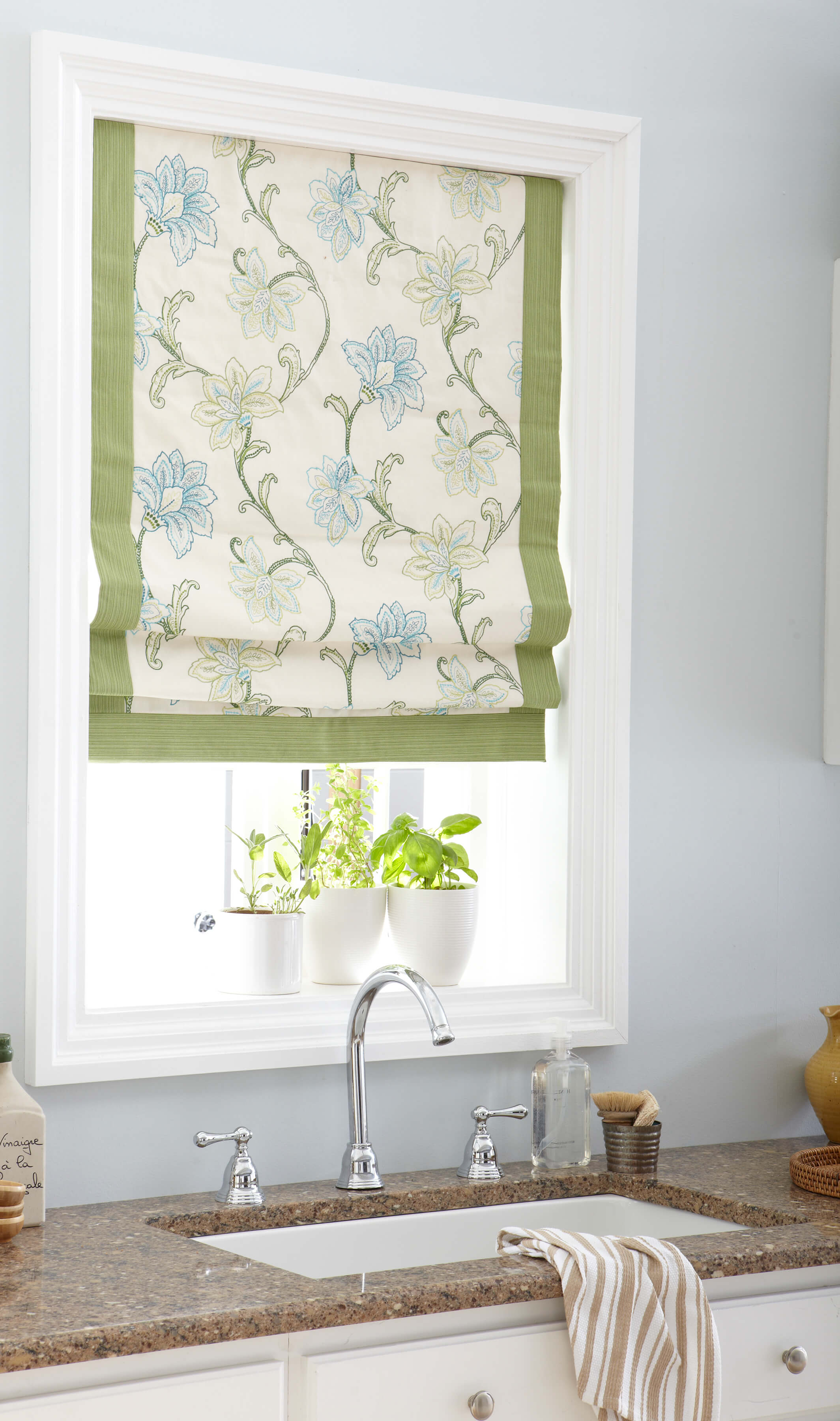
ROMAN SHADES
Roman shades are made from fabric which means they could react poorly to certain cleaners.
There are numerous fabric choices available for Roman shades, so be sure to double check before using a cleaning agent on the material.
The best way to clean Roman shades is to shake them out and then remove any extra dust with a brush attachment of a vacuum cleaner. No need to remove the window treatment from their mounts. Simply open and close the Roman shade to dislodge the dust and then lower the shade to clean the front and back.
If you are unsure of whether a certain cleaning agent is safe to use, you can always check with the manufacturer for how best to spot clean the material without damaging the shade.
Soft Treatments
Soft treatments include drapes, curtains, sheers, and top treatments. They are extremely versatile and can be made from a variety of fabrics. Here are some of the most common soft window treatments you will see and how best to care for them.
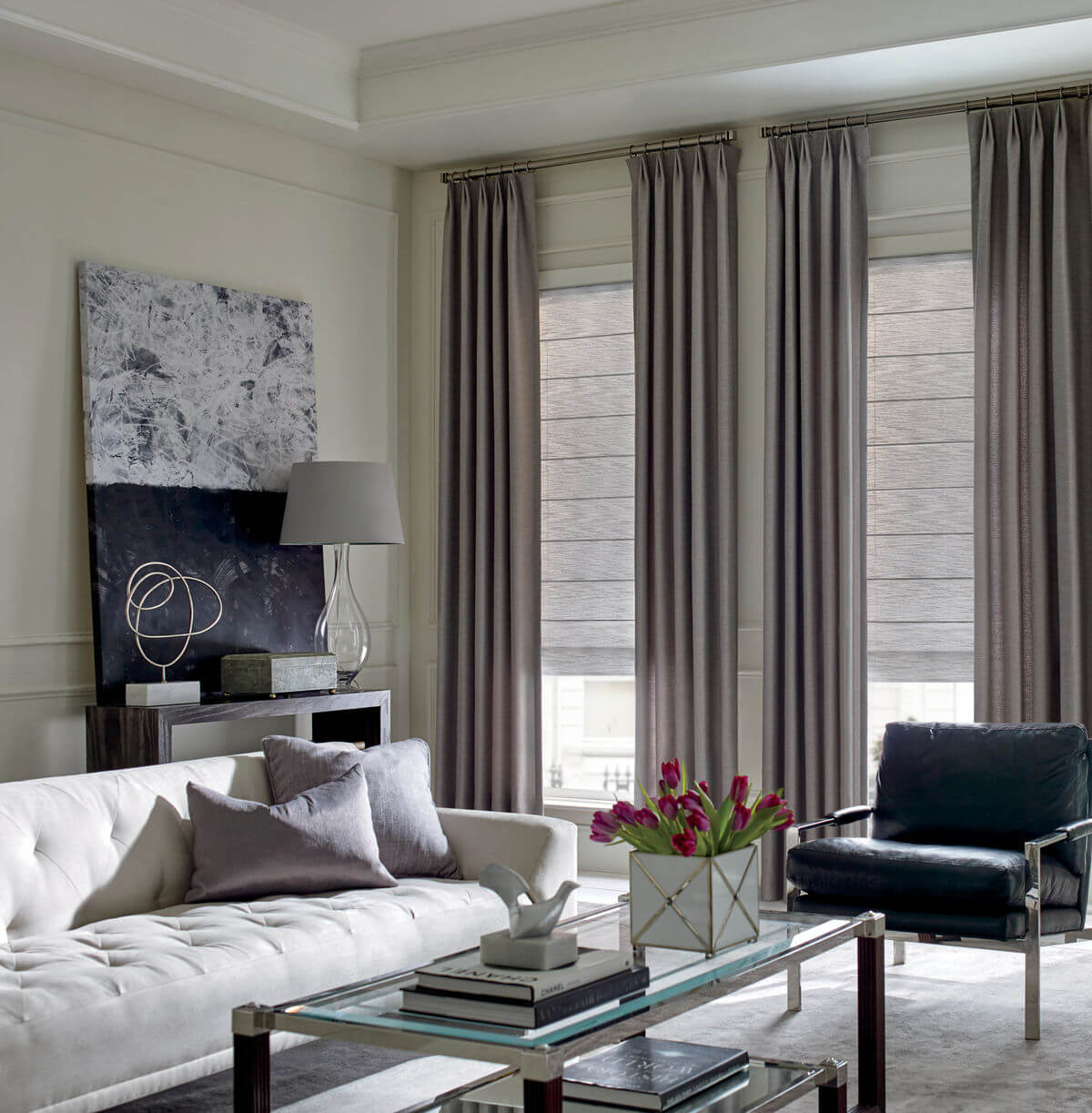
DRAPERIES/CURTAINS/PANELS
Draperies, curtains, and panels are beautiful window treatment options that can improve the functionality of a room as well as adding to the decor.
Using a liner can help to protect the material of the draperies. When drawing the drapes to open or close, gently shake out the folds to release any dust.
For a more thorough cleaning, use the brush attachment of your vacuum cleaner while set on the lowest suction setting. Be sure to secure any trim, beading, tassels, or other embellishments out of the way before using the vacuum cleaner on these treatments.
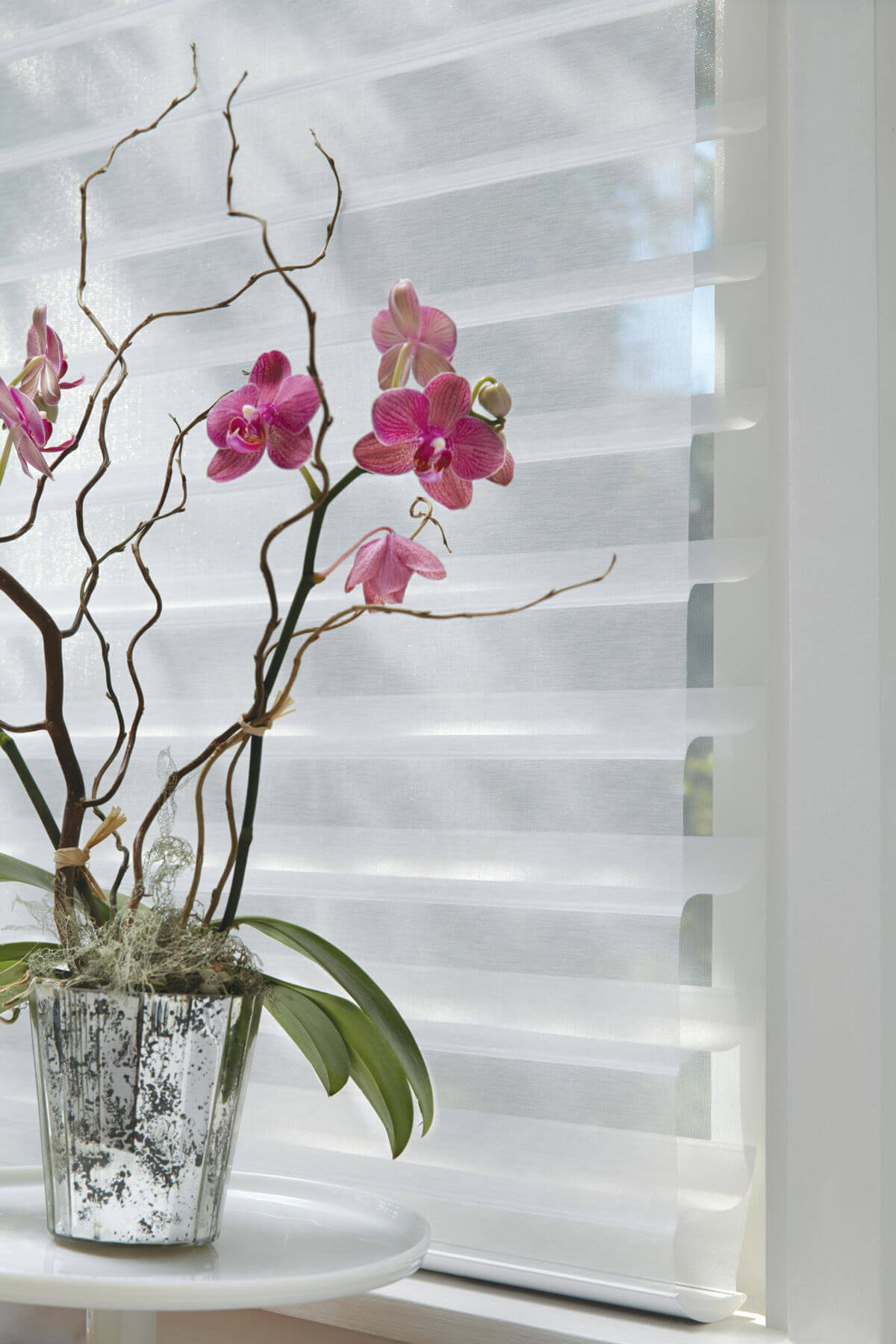
SHEERS
Sheers will be similar to care for except for the fact that extra careful consideration be paid to the delicate nature of the material.
The best way to clean sheers is by shaking out the lengths of fabric or giving it a light dusting. If a deeper cleaning is necessary, you can always double check with the manufacturer.
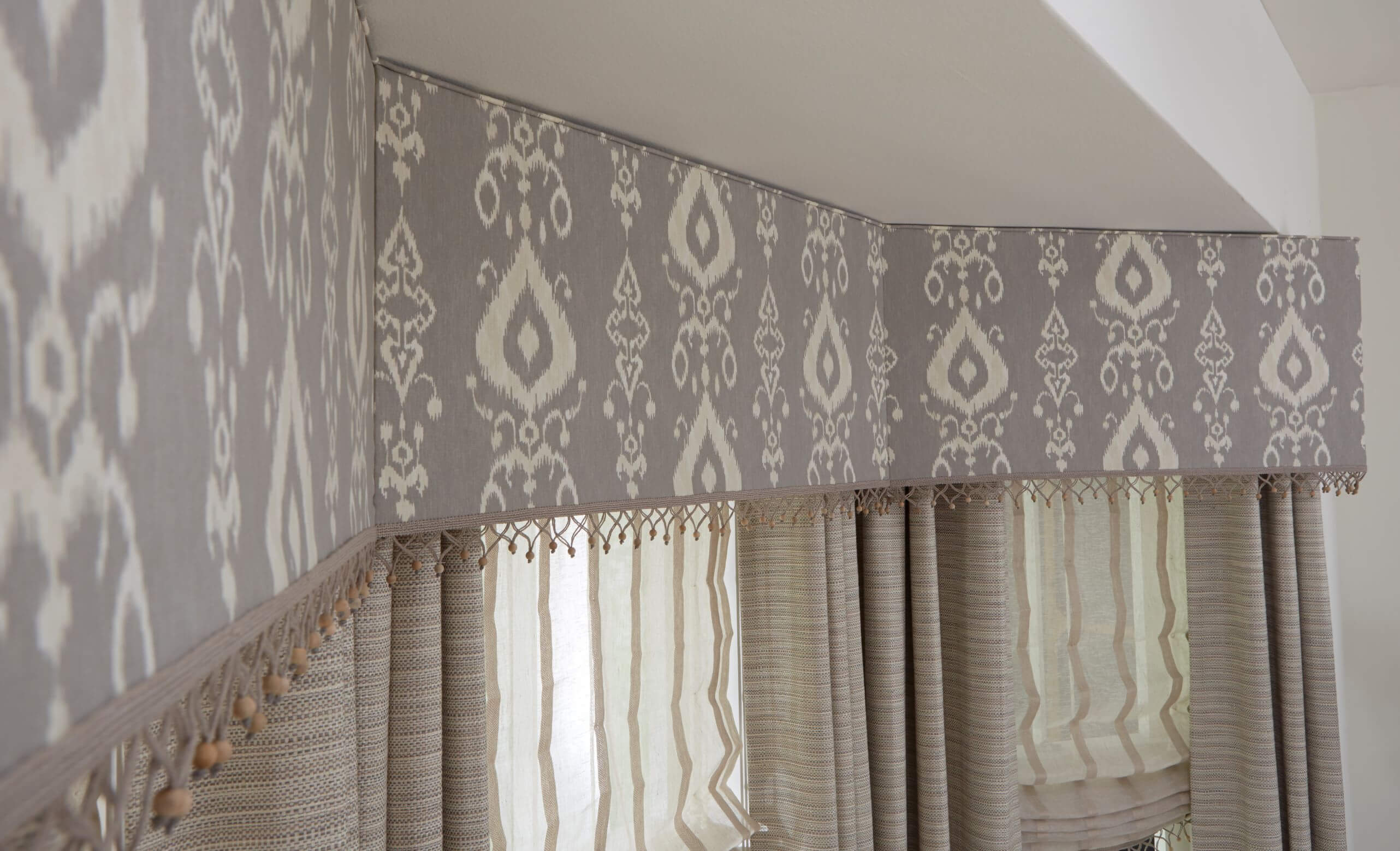
TOP TREATMENTS
Since top treatments are higher than other window treatments and typically do not open or close, they should not need to be deep cleaned. The best way to clean a top treatment is just by dusting or vacuuming from time to time to get rid of any dust that collects.
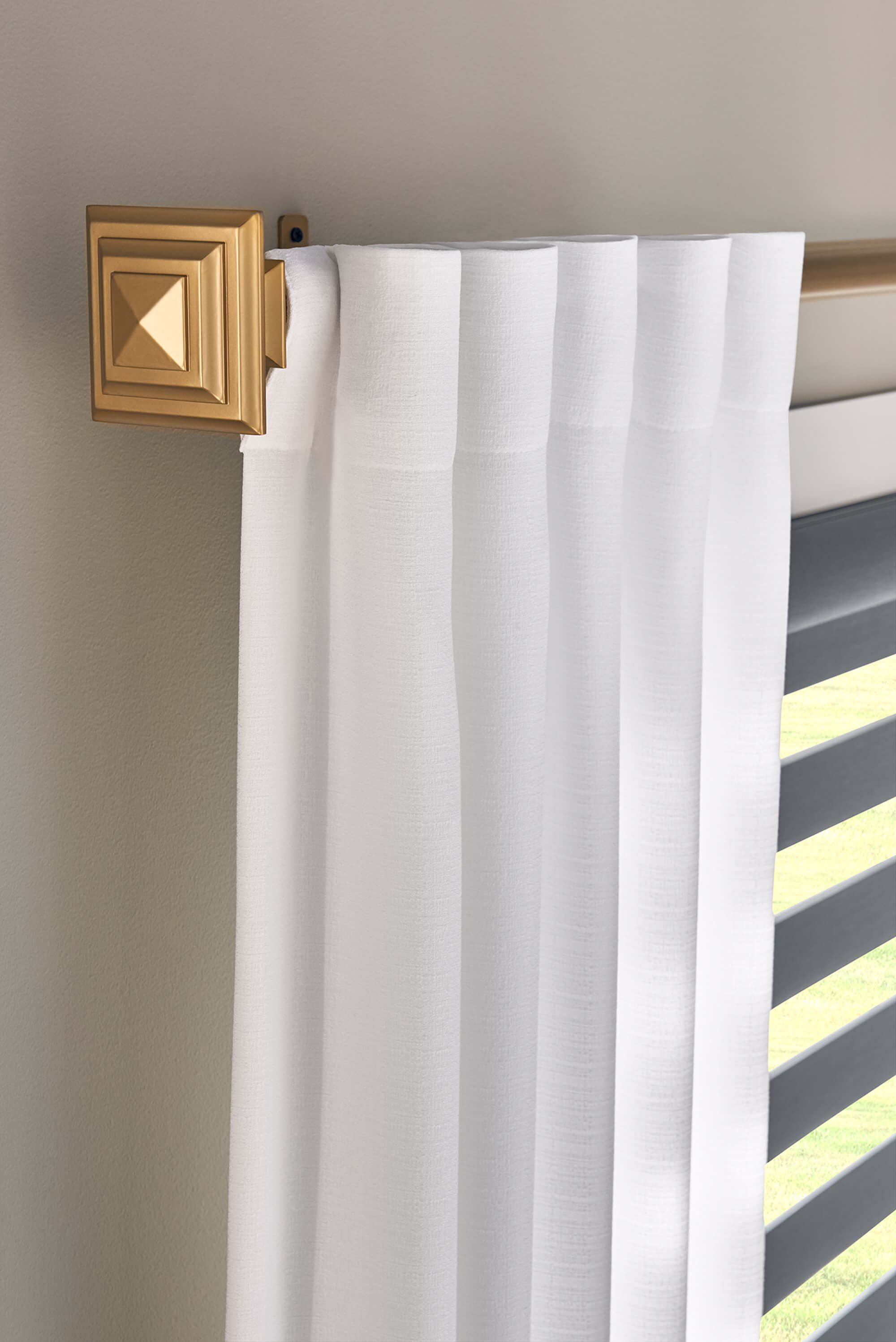
DRAPERY HARDWARE
Last but certainly not least, don’t forget to wipe down the decorative hardware! The hardware provides critical pieces to attach the window treatment to the window or wall.
Hardware that will be visible is typically decorative to create another eye catching design element. These pieces will also need to be wiped down from time to time to remove any dust that might have settled.
Take into consideration the type of material in the decorative piece before using water or cleaners on these pieces of hardware.
Conclusion
When it comes to cleaning your window treatments, consider the material of the treatment first and foremost.
For light cleaning, stick to dusting or shaking out the material as necessary. As with most things, the more often you can do a quick, light cleaning, the less frequently you will need to perform a deeper cleaning.
Spring cleaning is a great time to perform a deeper cleaning of your window treatments. Be sure to consider the material before deciding what to use on your window treatments. Take your time and systematically work your way from window to window, room to room. If you are homebound, take advantage of this extra down time and get this task checked off your to-do list!
While you are cleaning, you might discover window treatments that no longer match the style and feel of a room. Reach out to us for some design inspiration! We are even offering virtual consultations.
We would love to show you some of the exciting new products and materials that are available that can help give your room a fresh new look. We also have some exciting advancements in motorization and home connected solutions that are sure to amaze you. Call us at (888) 650-6187 or schedule a free design consultation today! We are also offering virtual consultations at this time. Call us today to get more information.
 About the Author: Brooke Carr, Gotcha Covered
About the Author: Brooke Carr, Gotcha Covered
Brooke joined the Gotcha Covered family in 2018 as the Social Media Coordinator. She works closely with our corporate teams and our Gotcha Covered franchisees to develop insightful and helpful content for our brand.

